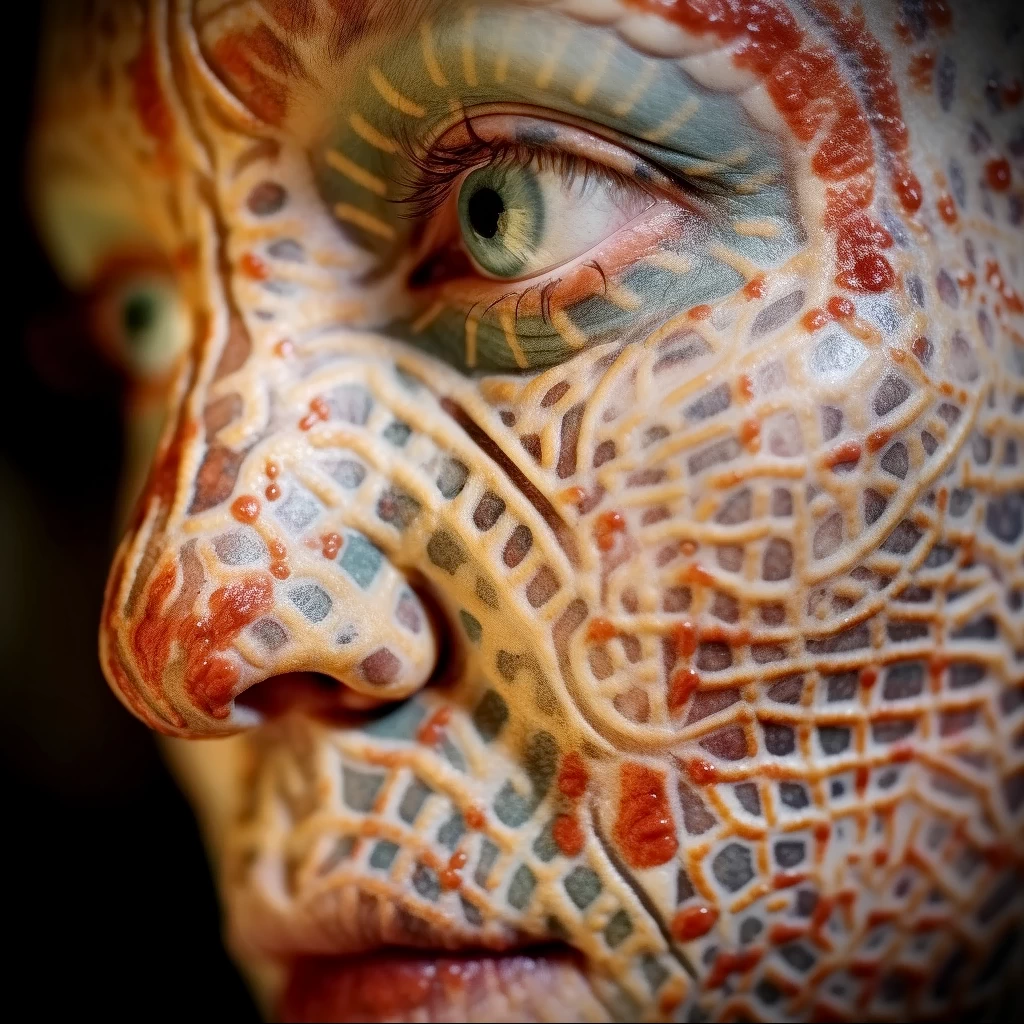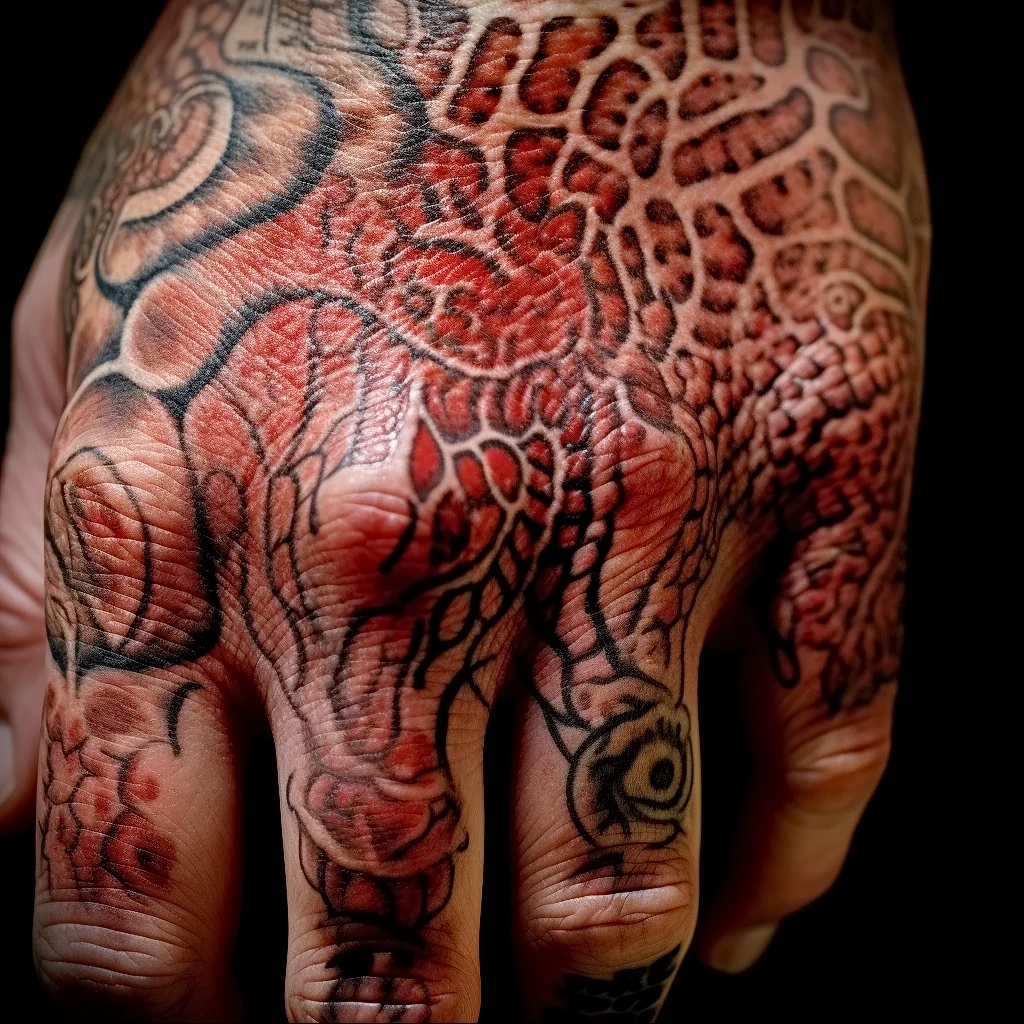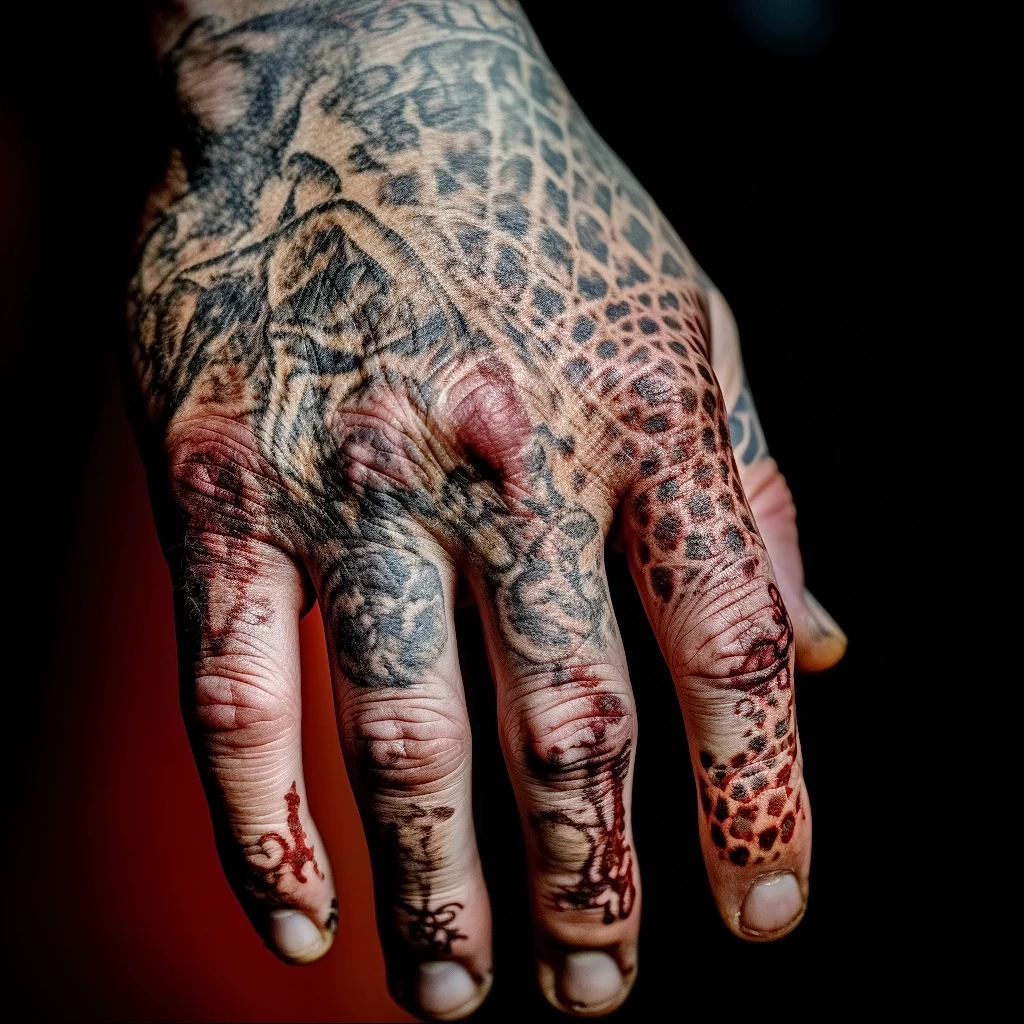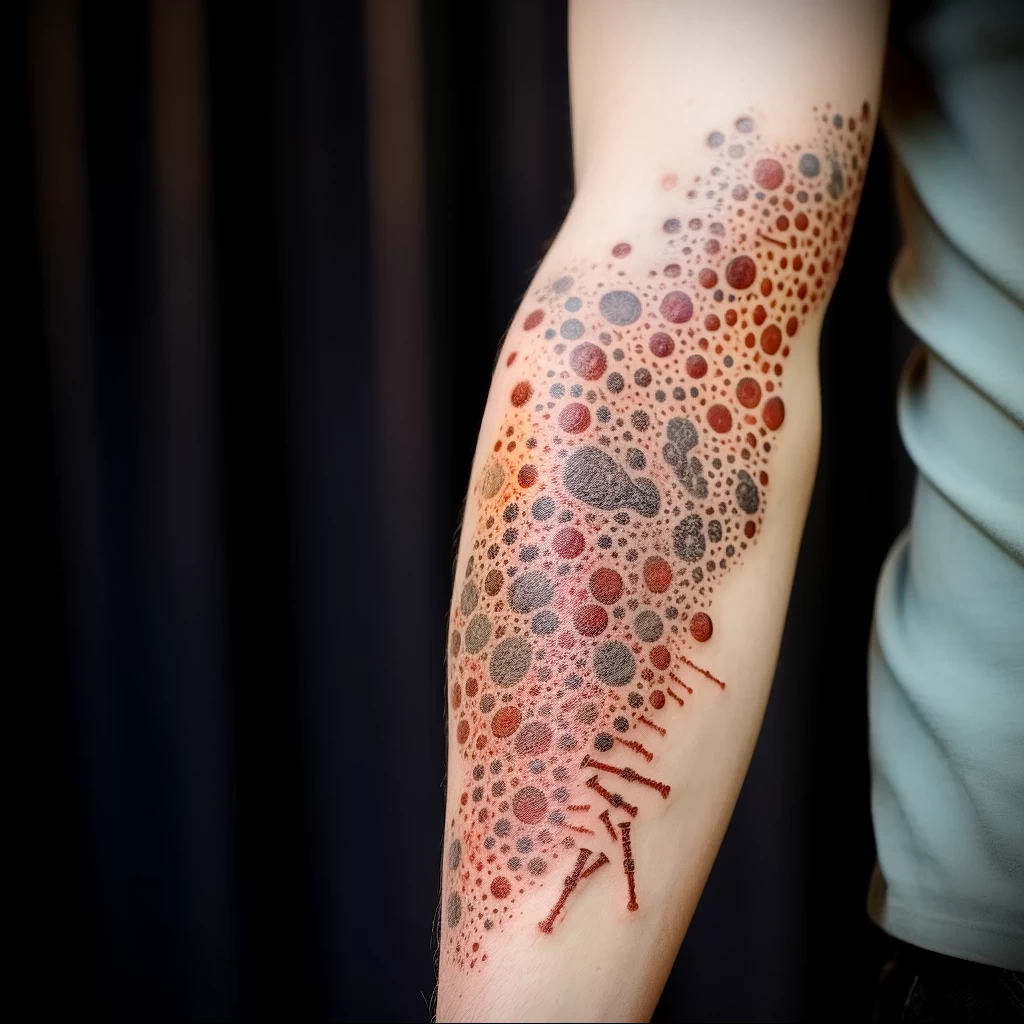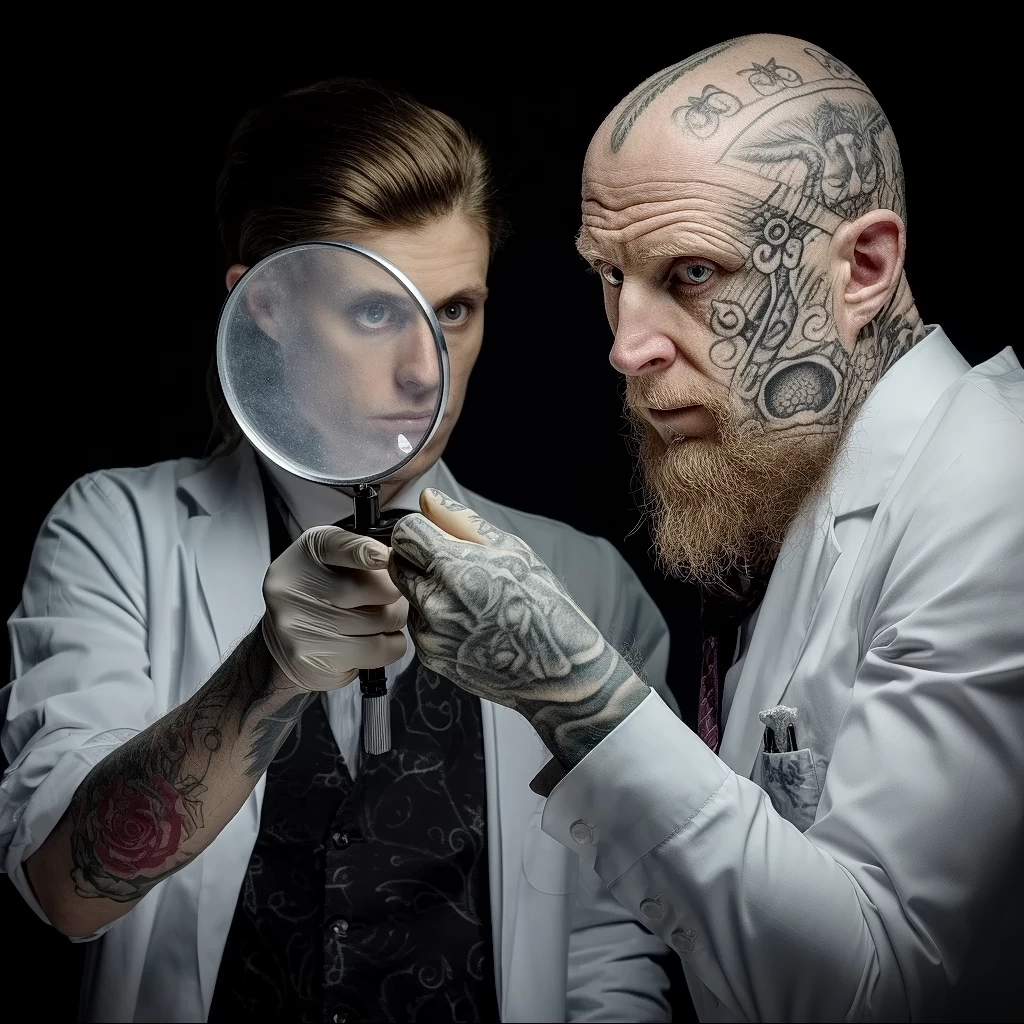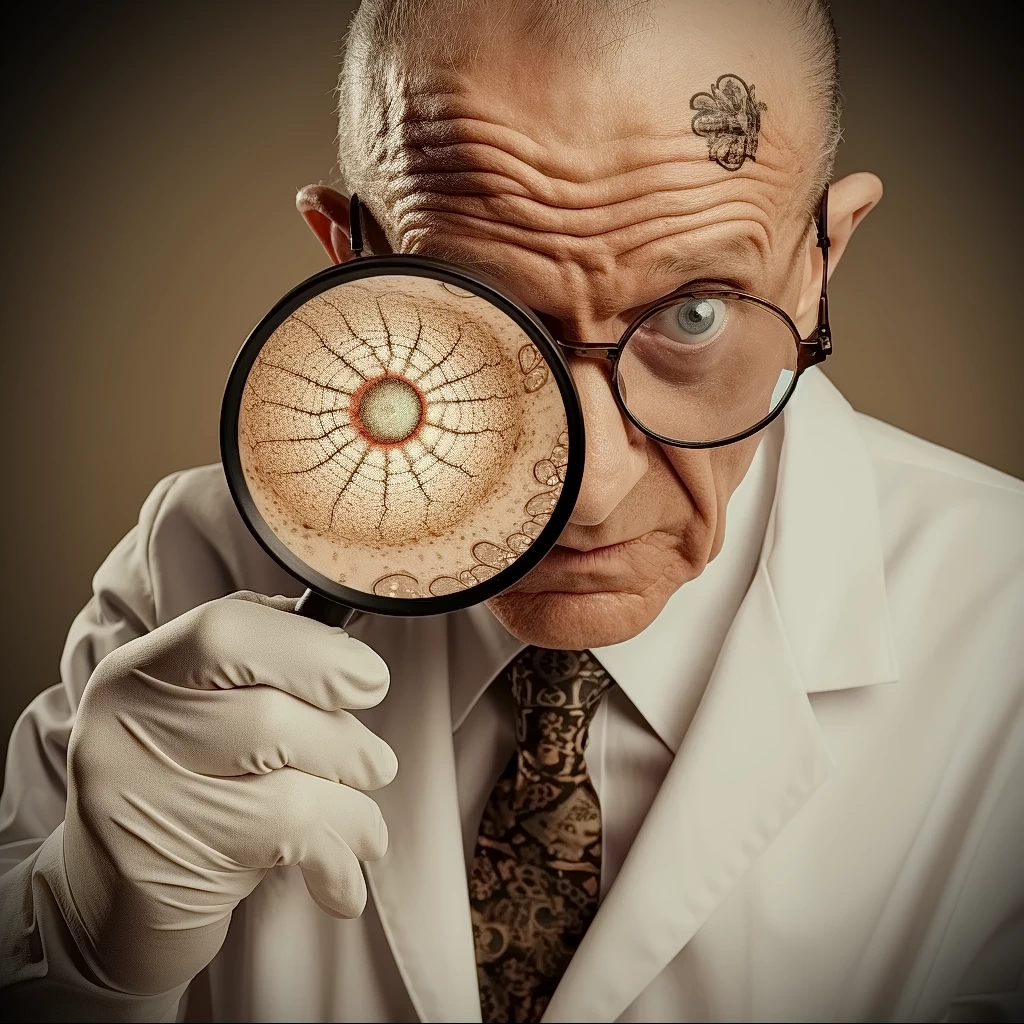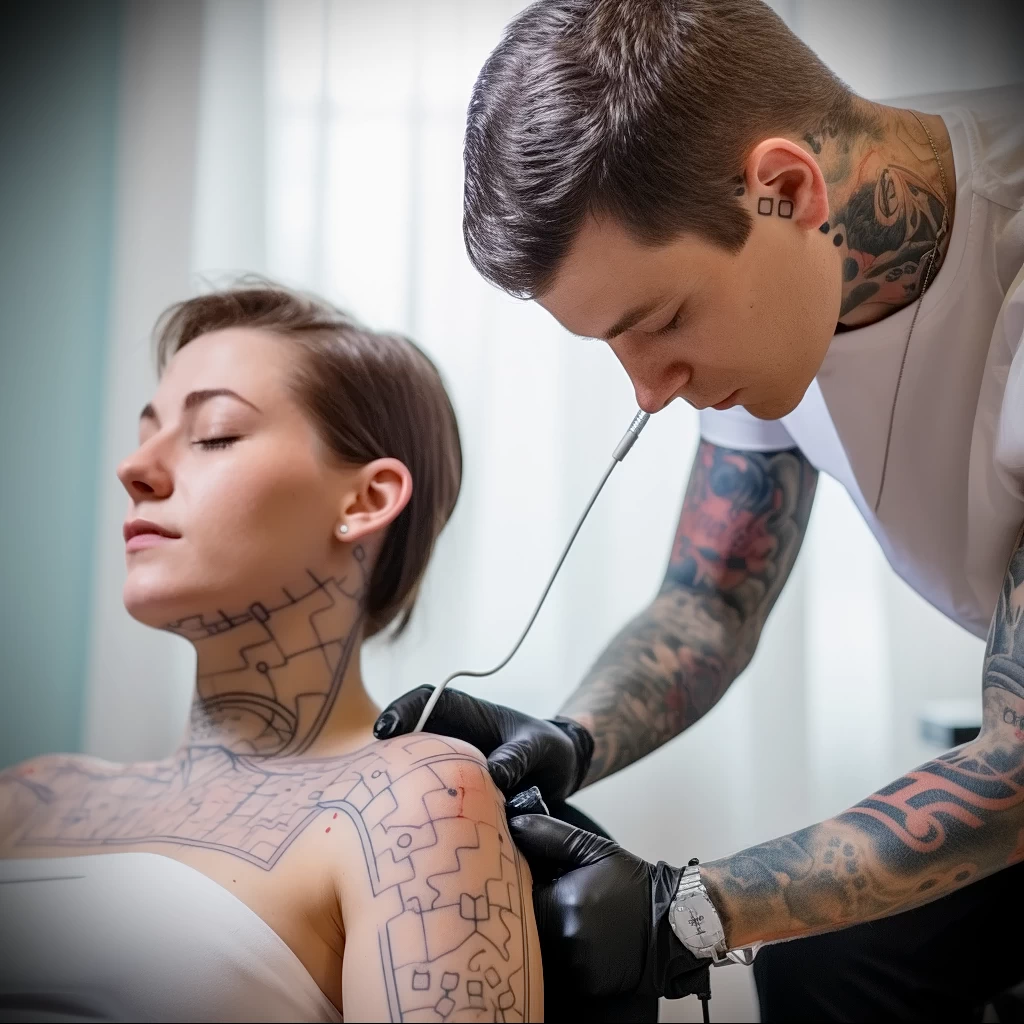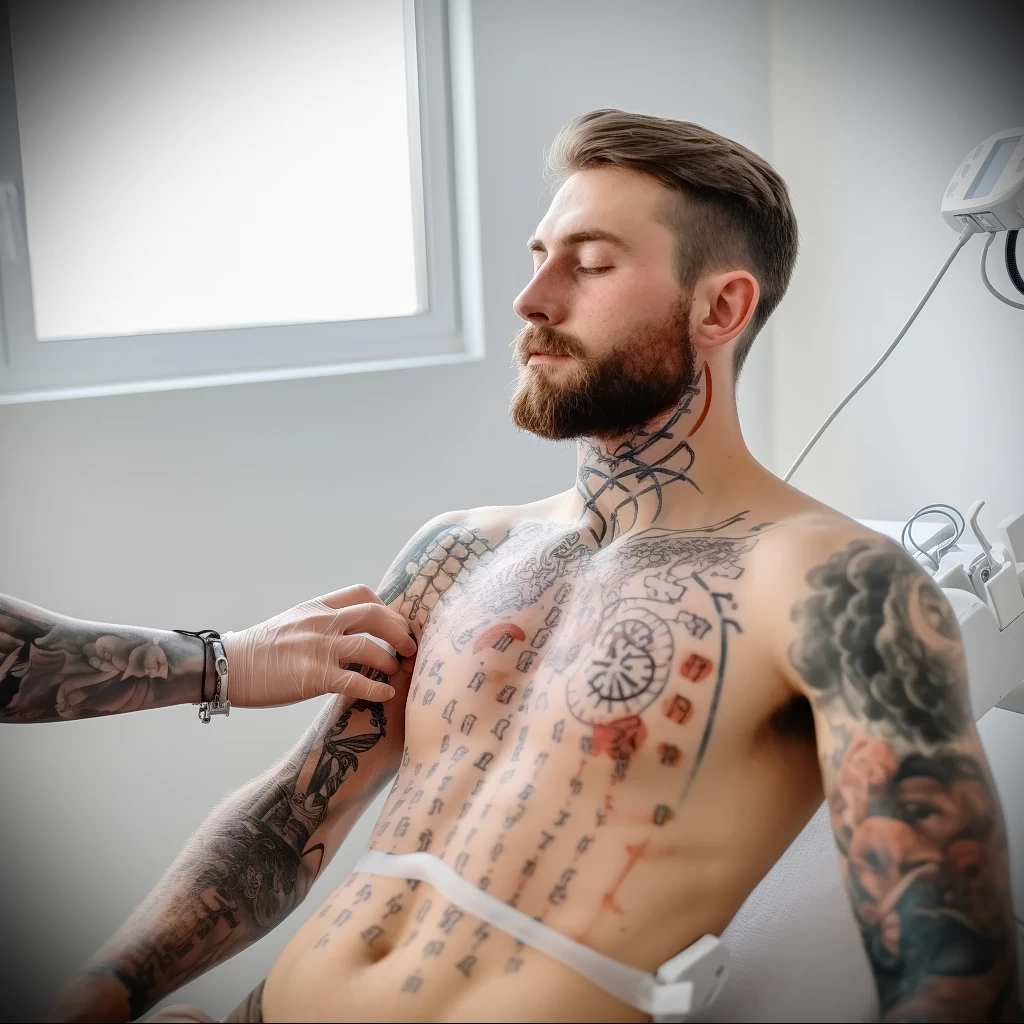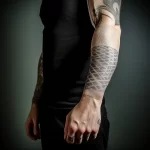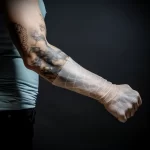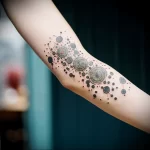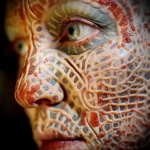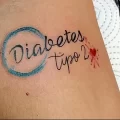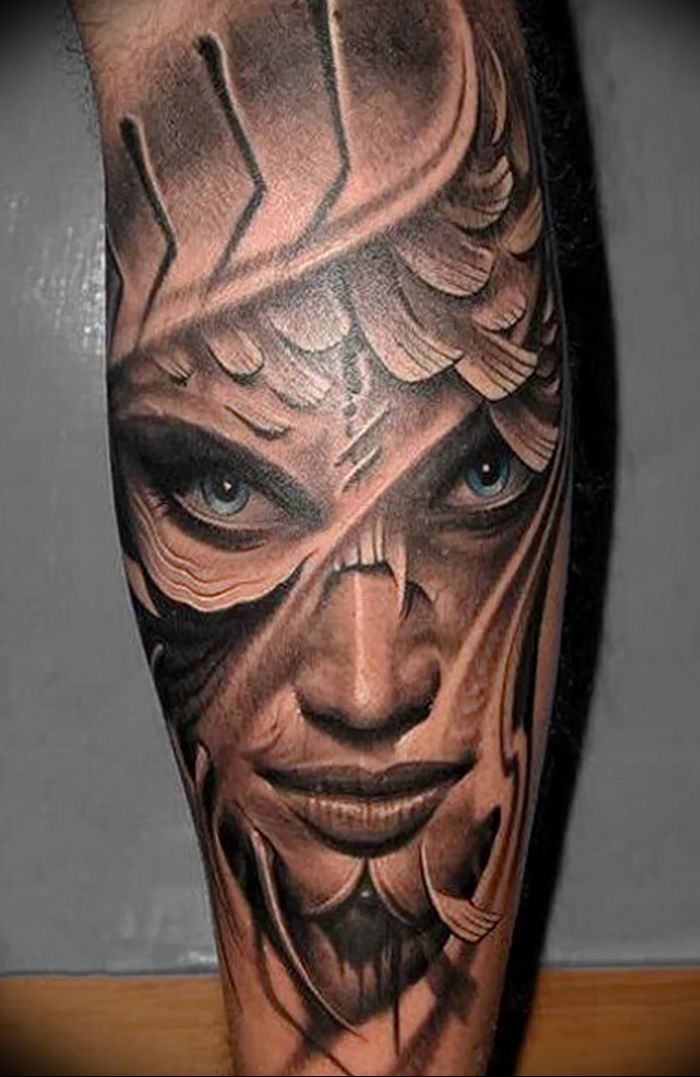Tattoos are not only art but also a responsibility. In our latest article, we delve deeply into the topic of allergic reactions to tattoos: from recognizing the first symptoms to effective treatment and prevention methods. Read to learn how to avoid common mistakes and ensure the safety of your tattoo, as well as your health.
WHAT TO DO IF YOU HAVE AN ALLERGY TO A TATTOO: INTRODUCTION
Tattoos have long ceased to be merely body decorations, transforming into an art of self-expression and a symbol of individuality. However, despite their wide popularity and variety of techniques and styles, tattoos can have a downside, especially when it comes to allergic reactions. A tattoo allergy is a reaction of the body that can manifest as irritation, itching, redness, or even swelling in the area where the tattoo is applied. These reactions can occur immediately after the tattoo is done or some time later. According to statistics, allergic reactions to tattoos are not very common, but they can be serious enough to require medical intervention. Although exact figures vary depending on studies, it is noted that a certain percentage of people experience allergic reactions to the dyes used in tattoos, especially red and black pigments. This is because some inks may contain components that cause irritation or allergy in sensitive individuals. Understanding the potential risks associated with tattoos and knowing how to deal with possible allergic reactions is an important aspect for anyone considering decorating their body with tattoos. This article is designed to provide readers with the necessary information about tattoo allergy symptoms, prevention methods, and treatment options, helping them make an informed choice.
WHAT IS A TATTOO ALLERGY?
A tattoo allergy is an immune response of the body to one or several components of the ink or other materials used in the tattooing process. This reaction can manifest both during the procedure and some time after its completion. Typically, a tattoo allergy manifests as skin reactions. These manifestations can include redness, itching, swelling, rashes, or even the formation of blisters. In some cases, the allergic reaction can lead to more serious conditions, such as eczema or dermatitis. It is important to note that these reactions can vary in severity and duration, depending on the individual characteristics of the body. The causes of tattoo allergies are diverse. One of the most common factors is a reaction to dyes. Some inks contain metals and other chemicals that can cause allergic reactions. For example, red pigment often contains mercury or cadmium, and black — carbon or iron. In addition, hygienic conditions during the tattooing process also play an important role. Failure to maintain the sterility of instruments and the workspace can lead to infection, which will exacerbate the allergic reaction. Finally, each person’s individual skin sensitivity also affects the risk of developing an allergy. Some people may be more prone to allergic reactions due to the characteristics of their immune system or the presence of pre-existing skin diseases. Understanding these factors helps in making a reasoned decision about getting a tattoo and preparing for the procedure, to minimize risks and enjoy the art of tattoo without negative health consequences.
FIRST SIGNS AND SYMPTOMS OF TATTOO ALLERGY
Identifying the first signs and symptoms of a tattoo allergy is key to timely treatment and prevention of complications. Allergic reactions can vary in severity and time of manifestation, but there are common symptoms to be aware of. One of the first and most common signs is redness and itching in the area of the tattoo. These symptoms can occur almost immediately after the tattoo is done or some time later. Other common symptoms include swelling, formation of small blisters on the skin, peeling, and sometimes rashes. In more severe cases, painful nodules, suppuration, and even the spread of the inflammatory process beyond the area of the tattoo may occur. It is important to distinguish a normal skin reaction from an allergic reaction. After getting a tattoo, there is usually some redness and swelling, which are a normal part of the healing process. These symptoms usually subside within a few days. However, if redness, itching, or swelling persist for a longer period or intensify, it may indicate an allergic reaction or infection. The appearance of symptoms different from the usual signs of healing, such as severe itching, the spread of redness beyond the tattoo, the formation of blisters or nodules, should be a reason for immediate consultation with a specialist. This is especially important in cases where symptoms are accompanied by general malaise, increased body temperature, or signs of infection. Careful observation of the skin condition after getting a tattoo and prompt response to any unusual signs will help prevent the development of serious complications and maintain the health and beauty of the tattoo.
FIRST AID FOR TATTOO ALLERGY
When suspecting an allergic reaction to a tattoo, it’s crucial to know the first aid measures to take before visiting a doctor. The correct actions can help reduce discomfort and prevent the situation from worsening. The first step is to stop contact with any substances that might aggravate the allergic reaction. This includes ceasing the use of cosmetics, ointments, or creams not recommended for tattoo care. In case of itching or irritation, gently wash the affected area with cool water and apply a soothing lotion or aloe vera gel to alleviate itchiness and irritation. If there is swelling or redness, using a cool compress can bring relief. It’s important to avoid applying ice directly to the skin, so it’s recommended to wrap the ice in cloth or use special gel cold packs. Antihistamines can also be taken to reduce allergic manifestations, but only after consulting with a doctor or pharmacist. In cases where the allergic reaction is accompanied by intense itching, it’s crucial to avoid scratching the affected area, as this can lead to infection and worsen the skin’s condition. If the skin starts to peel, do not attempt to remove peeling areas, as this can disrupt the healing process. While taking these measures, remember that they are a temporary solution, and it’s necessary to see a dermatologist or doctor at the first signs of allergy. This is especially important if symptoms do not subside or worsen, and if there are signs of infection, such as pus, severe pain, or increased body temperature. Timely and proper response to the first signs of allergy and adequate first aid can significantly improve the skin’s condition and prevent further development of the allergic reaction. However, it’s essential to understand that consultation with a specialist is necessary to determine the exact cause of the reaction and prescribe effective treatment.
WHEN TO SEEK MEDICAL ATTENTION FOR TATTOO ALLERGY
Understanding when to seek medical attention for a tattoo allergy is critical in preventing complications and maintaining skin health. While some mild allergy symptoms can be managed at home, there are specific signs that require immediate medical help. One of the key symptoms that require a specialist’s attention is ongoing or worsening redness, itching, or swelling, especially if they do not subside over several days. If the skin around the tattoo becomes hot to the touch, this may indicate an infection. The emergence of pus, severe pain, fever, or chills are also alarming signs that require immediate medical attention. It’s also important to note any allergic reactions that spread beyond the tattoo area, especially if accompanied by general malaise or other allergy symptoms, such as difficulty breathing, facial or throat swelling, and extensive rashes on the body. When seeking medical help, it’s advisable to start with a visit to a dermatologist. Dermatologists specialize in skin diseases and can accurately assess the condition of the tattoo and surrounding skin, as well as determine the presence of an infection or allergic reaction. In some cases, consultation with an allergist may be required, especially if there’s suspicion of a general allergic reaction or specialized tests are needed to identify the allergen. Seeking medical attention at the first signs of a severe allergic reaction or infection not only helps avoid complications but also ensures the most effective treatment, ultimately affecting the preservation and quality of the tattoo. It’s important to remember that timely medical attention is key to maintaining the health and beauty of your tattoo.
DIAGNOSIS AND TREATMENT OF TATTOO ALLERGY
When it comes to diagnosing and treating a tattoo allergy, it’s important to go through several key stages to ensure effective and safe recovery. Diagnosis of Allergic Reaction The diagnosis starts with a detailed examination of the affected area by a specialist. Dermatologists typically conduct a visual inspection of the skin and ask questions about the timing of symptom onset, their nature, and any care products used. In some cases, skin tests may be required to identify the specific allergen. These tests involve applying small amounts of various substances to the skin and observing the reaction. This can help identify a specific component of the tattoo ink or other product that causes the allergy. Methods of Treatment The treatment of a tattoo allergy depends on the severity and nature of the reaction. For mild reactions, such as minor itching or redness, topical corticosteroids or antihistamine creams may be recommended. They help reduce inflammation and itching. In more severe cases, where there is extensive inflammation or even infection, oral steroids or antibiotics may be required. It’s also important to consider an individual approach to treatment, taking into account all aspects of the patient’s health, including the history of previous allergic reactions and the presence of other skin diseases. Impact of Treatment on Tattoo Preservation The impact of treatment on the tattoo itself can vary. While most treatments aim to minimize effects on the color and shape of the tattoo, some medications or treatment methods can affect the tattoo’s appearance. For instance, strong topical corticosteroids can sometimes blur colors or alter the skin’s texture. In these cases, it’s important to closely cooperate with the dermatologist to find a balance between effective allergy treatment and preserving the aesthetics of the tattoo. Correct diagnosis and individualized treatment approach are key factors in managing allergic reactions to tattoos. Timely consultation with a specialist and adherence to all recommendations not only help alleviate symptoms but also preserve the beauty and integrity of your tattoo.
PREVENTION OF ALLERGY WHEN GETTING A TATTOO
Preventing allergic reactions to tattoos begins long before the actual tattooing process and includes several key aspects, from choosing the studio and artist to caring for the tattoo after it has been applied. Choosing the Studio and Artist The first and perhaps most important step in allergy prevention is the careful selection of the studio and tattoo artist. Ensure that the studio is licensed and adheres to all hygiene and safety standards. A good reputation of the studio and positive customer reviews can serve as additional confirmation of the quality of services. It’s also important to choose an artist who has experience with safe inks and materials and can provide information about the composition of the pigments used. Preliminary Consultation and Allergy Tests Before getting a tattoo, it is recommended to have a preliminary consultation with the artist. During the consultation, you can discuss potential risks and conduct allergy tests on the inks that will be used. This test involves applying a small amount of pigment to the skin and observing the reaction over several days. This helps to eliminate the risk of an allergic reaction during or after the tattooing process. Recommendations for Tattoo Care Proper care for the tattoo after application plays a crucial role in preventing allergic reactions. It is important to follow all the artist’s care recommendations, which may include the use of special moisturizing and healing agents. Avoid using products with strong chemical components or fragrances that can cause irritation or allergy. Also, protect the fresh tattoo from direct sunlight and avoid getting dirt and dust on the wound in the first days after getting the tattoo. Preventing an allergy to tattoos requires a responsible approach to choosing the studio and artist, careful preparation for the procedure, and subsequent care for the tattoo. By following all these measures, you can significantly reduce the risk of allergic reactions and enjoy the beauty of your tattoo without complications.
FAQ: QUESTIONS AND ANSWERS ON TATTOO ALLERGIES
Q1: Can all types of tattoo inks cause allergies? A1: Yes, although some inks are more prone to causing allergic reactions. For example, red pigments often contain mercury or cadmium, which can be allergens. Nevertheless, an allergy can occur with any type of ink, depending on individual sensitivity. Q2: How soon after getting a tattoo can an allergy manifest? A2: An allergic reaction can manifest immediately after getting the tattoo or some time later. In some cases, the reaction can occur within a few hours, days, or even months after the procedure. Q3: What should I do if I notice the first signs of an allergy to my tattoo? A3: At the first signs of allergy, such as redness, itching, or swelling, it is recommended to wash the area with cool water and consult a doctor. You should not self-prescribe treatment or apply ointments without a specialist’s consultation. Q4: Is it possible to completely avoid the risk of allergy when getting a tattoo? A4: It is impossible to completely eliminate the risk of allergy, but it can be significantly reduced by choosing an experienced artist and a quality studio, conducting preliminary allergy tests on the inks, and taking proper care of the tattoo after its application. Q5: Do I need to remove the tattoo if an allergy occurs? A5: Not necessarily. In many cases, the allergic reaction can be resolved with appropriate treatment. However, in some serious cases, when the allergy does not respond to treatment or causes severe complications, tattoo removal may be required. Q6: Can a tattoo allergy manifest as a systemic reaction? A6: Although rare, an allergic reaction to a tattoo can sometimes lead to a systemic reaction, including symptoms such as difficulty breathing, facial or throat swelling. In such cases, immediate medical attention is necessary.
CONCLUSION ON TATTOO ALLERGIES
In conclusion to this article dedicated to issues of allergies to tattoos, it is important to highlight several key points that will help readers make an informed choice and avoid potential complications. First and foremost, it is important to understand that although allergic reactions to tattoos are not common, they can have serious consequences for skin health. Therefore, awareness of allergy symptoms, their possible causes, and treatment methods is a key aspect when deciding to get a tattoo. Choosing a professional studio and experienced artist, as well as conducting a preliminary consultation and allergy tests, significantly reduces the risk of undesirable reactions. Moreover, proper care for the tattoo after its application plays a vital role in the healing process and prevention of allergic reactions. Finally, it is important to emphasize that at the first signs of an allergy, immediate consultation with a specialist is necessary. Only a qualified doctor can accurately diagnose the problem and prescribe the appropriate treatment. This ensures not only the preservation of skin health but also helps avoid potential complications related to allergic reactions to tattoos. A responsible approach to choosing a tattoo, caring for it, and careful monitoring of your skin’s condition will help you enjoy the art of tattooing without worrying about your health.
